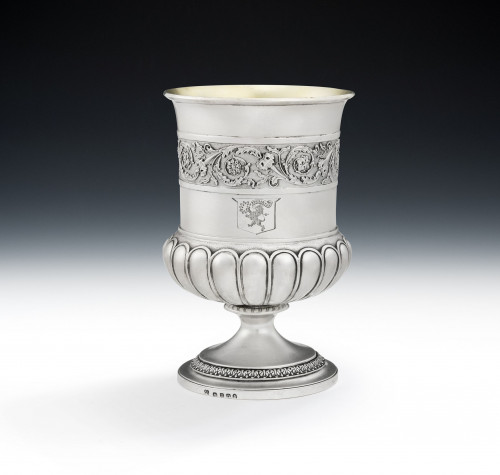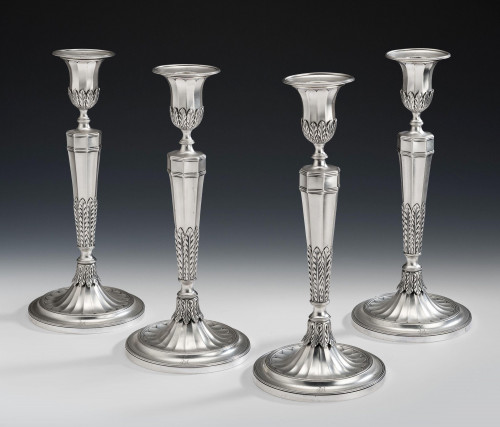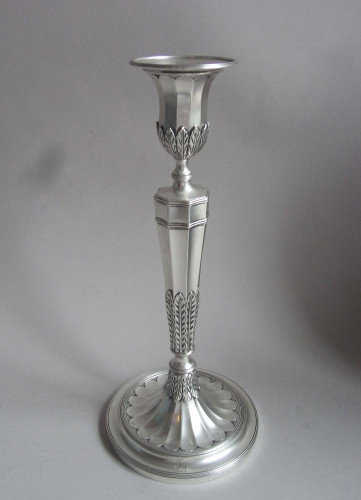- Home
- British Silver 1760-1830
- An exceptional George III Sideboard Salver made in London in 1780 by Robert Piercy.
An exceptional George III Sideboard Salver made in London in 1780 by Robert Piercy.
An exceptional George III Sideboard Salver made in London in 1780 by Robert Piercy.
375395
The Salver is of a large size and very good weight and would have stood on a sideboard as a symbol of status, when not being used by the footman, possibly to serve drinks. This piece stands on four substantial cast claw and ball feet and has a shaped circular form with a raised rim decorated with applied beading and foliate motifs. This encloses an inner band of raised blue bell swags interspersed with flower heads. The centre is finely engraved with a contemporary shield shaped armorial with Crest above and the motto "Ne Quid Nimis" engraved on a drapery banner below. This is all surrounded by a Neo Classical cartouche of crossed branches, tied bluebell garlands and beaded bands. The Salver is in quite exceptional condition and is well marked on the reverse.
The Arms are those of Drinkwater of Irwell House, Lancashire. Peter Drinkwater (1742-c.1801) had a business in Spring Gardens, Manchester in 1781 and diversified into cotton factory in Northwich. He married Margaret Bolton, sister of Mr. Serjeant Bolton (council for the crown in Rex versus Arkwright 1785). In 1784 Peter donated 40 guineas to the Committee of the Fustian Trade (the same as the immensely wealthy Sir Richard Arkwright). Drinkwater built the first mill in the world to be powered by a Boulton and Watt steam engine and employed Robert Owen, the well known Utopian socialist, to manage a mill. In 1792 Drinkwater was made a JP and built Irwell House and in 1794 he bought the title of Lord of the Manor of Prestwich for £4,482 (around £600,000 today).
This design by Sir William Chambers is based on drawings carried out by Chambers’ pupil, John Yenn ( 1750-1821 ) which are in the Victoria and Albert Museum. The design was first used by Chambers in the 1760’s after the 4th Duke of Marlborough employed the celebrated architect to undertake extensive alterations to Blenheim Place, and Marlborough House in London. The Duke also ordered a silver dinner service from Parker and Wakelin in this very design attributed to Chambers. Stylistic similarities, as well as the use of heavy swags, can be seen in Chambers’ model for a state coach for George III ( also in the V & A ). Similarly, the bluebell festoons and paterae relate to Chambers’ work on the East Gate at Blenheim. Some pieces from the Marlborough Service still survive at Blenheim Palace and other known examples are a Tureen in the Leeds City Art Gallery.
Diameter: 18.5 inches, 46.25 cm.
Height: 2 inches: 5 cm.
Weight: 77oz.
Thank you for your enquiry.
We will get back to you soon.
Please create wishlist to add this item to
RELATED ITEMS



























